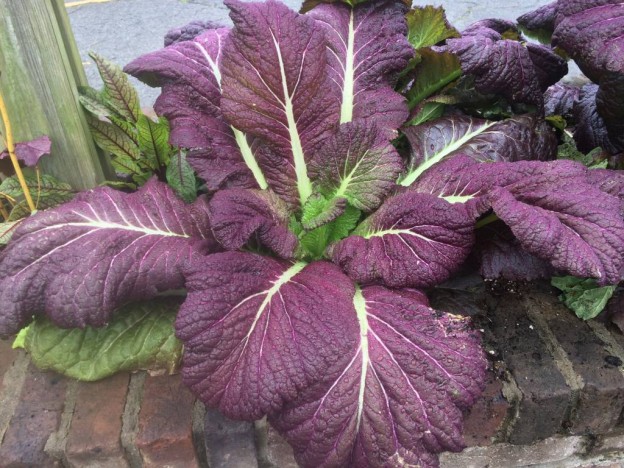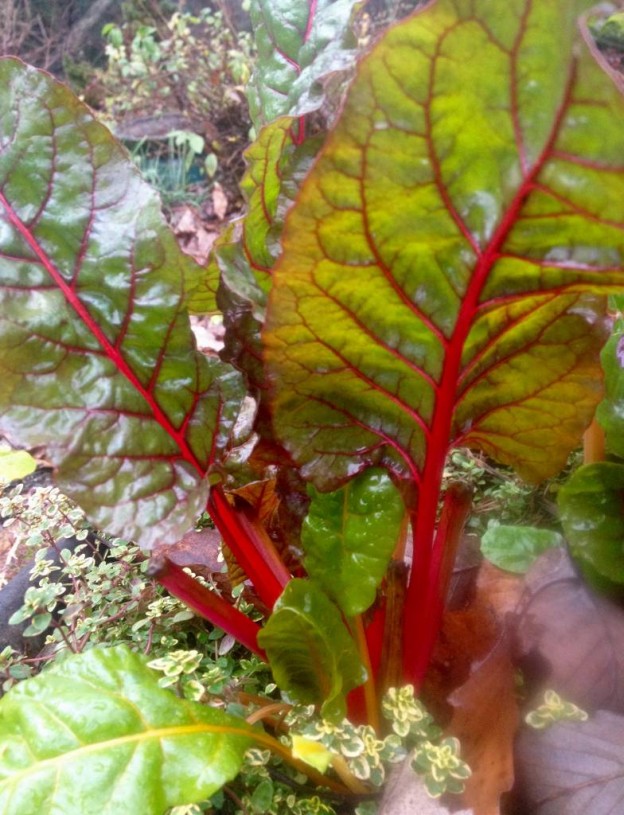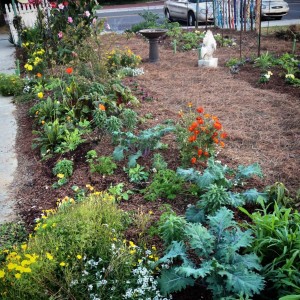
Tucking in winter plants around fall annuals, late fall…
The ‘better late than never garden’ is certainly living up to its name, since it was planted at the beginning of November 2014, and most of it finished just prior to the hectic holiday season, a full month later than I would have liked. This ‘better late than never’ schedule is working out okay so far, though, as the plants are growing steadily. Of course, more updates will follow, documenting successes and the inevitable failures that every garden and gardener has.
Most of these pictures were taken quickly very early on a mid-December morning in the middle of the holiday rush. Since there were other things that needed to be done, I couldn’t linger; but now, with the new year and more time, here’s an overview of the planting process and selection in this ‘better late than never’ winter garden.

Mid-December. Mulched and growing…
Let me admit right off that I’m not a “garden designer”. I can’t tell you that I drew a beautiful rendering of what I envisioned this garden to be come spring. No, the reality is that I grabbed a few packs of this and a few pots of that (usually in the middle of a busy day), raced across the street trowel and plants in hand, and plugged them in wherever I felt they worked best. So, in that way, little by little and over and over, the garden was planted. Time, attention, and the weather will determine how it turns out this spring.
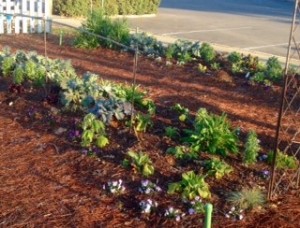
Violas, delphinium, poppies, kale, curly parsley, bachelor buttons and more growing… Mid-December
I began by planting a few foxglove, delphinium, and bachelor buttons under the still blooming summer tithonia. Then, when it was finally pulled out (Better late than never too!), pansies, violas, and sweet alyssum were added to large spaces that opened up.

Red Veined Sorrel, Rumex sanguinea, in the winter garden…January
Since the summer annuals were pulled out of them first, the two front beds were planted the earliest with snapdragons, poppies, bachelor buttons, chard, curly parsley, dill (The dill will eventually freeze at some point.), red veined sorrel, ‘Bull’s Blood‘ beets, kale, and mustard “Red Giant“. There’s quite a mix of annuals, herbs, flowers, and even bulbs (dwarf narcissus and ipheion) in each bed.
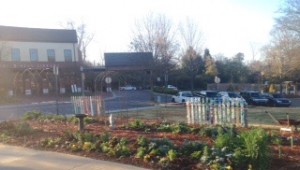
The ‘better late than never garden’ in mid-December…
A good layer of mulch is really important for your winter garden. Some folks start with a completely empty bed, add the mulch, then plant through it, a great method and easy to do. Of course, I did just the opposite. I had the time to plant before I had the help for the mulch! So, inevitably, there I was, mulching in the dark before the first cold snap of the season.
I also made sure everything was watered well before spreading the shredded pine bark around the little plants. There will be many more cold snaps before the winter is through, and I’m counting on this mulch to keep the soil warm since this isn’t a garden that gets babied.
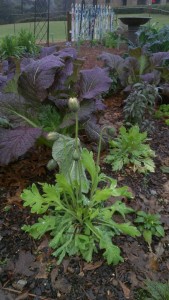
A poppy, in bud, with ‘Red Giant’ ornamental mustard in the ‘better late than never garden’ in January…
For people that don’t have big blocks of time (That’s most of us, I think.), planting a little bit at a time does work…obviously I’m a poster child for it. Now I’m concentrating on keeping winter weeds controlled in the beds, since the two worst offenders, chickweed and henbit, insist on coming up. Don’t let these winter weeds get hold in your garden. Pulling a few every week is far more preferable than tackling them come spring, after they’ve been allowed to smother your pansies and violas.
Have you planted some flowers for spring? If you haven’t, try a few poppies, pansies, or violas since, as you know now, it’s never too late to plant a garden. I’ll keep you posted on our ‘better late than never’ garden’s progress too!
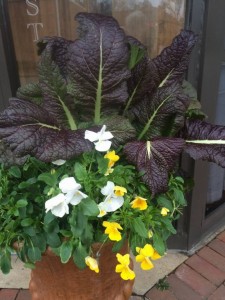 I’ve talked before of my love of foliage plants and how much I believe they add to planters and garden beds. Here is another that proves my point. I planted a few small pots of ‘Red Giant’ mustard in our sign planter out front, at the side of the shop in large troughs, and in urns at the front of the restaurant next door last November.
I’ve talked before of my love of foliage plants and how much I believe they add to planters and garden beds. Here is another that proves my point. I planted a few small pots of ‘Red Giant’ mustard in our sign planter out front, at the side of the shop in large troughs, and in urns at the front of the restaurant next door last November.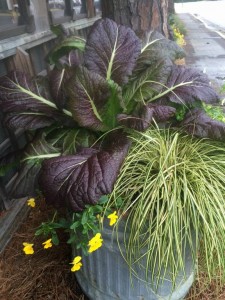
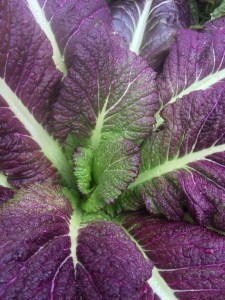 At its most impressive in the winter, that’s not always when it’s available. Though, if it is, you can be sure we’ll have it!
At its most impressive in the winter, that’s not always when it’s available. Though, if it is, you can be sure we’ll have it!
